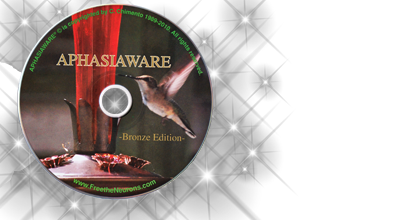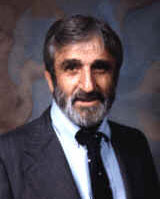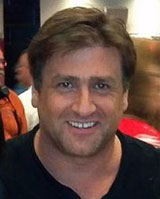THE SECRET OF OUR SUCCESS
Aphasiaware©'s success is attributed to the use of combining as many sensory stimuli as possible. We combine the use of visuals (graphics, animation, etc.), and audios (using a clear, distinct human voice) that provide soft negative and positive feedbacks. Additionally, a great part of its success is the opportunity for the users to repeat the exercises until they feel comfortable enough to progress to the next exercise or the next level of exercises.
It is like having a speech therapist available 24 hours a day, 365 days a year.
We developed the levels based on the needs of the users. For example, the most rudimentary level is the Vocabulary Level containing exercises for learning alphanumerics by displaying, for example on the first screen, the letter A followed by the sounding of the letter A, the letter B followed by the sounding of the letter B, followed by the display and soundings of the letters C through F. The letters A through F remain on the screen. The users can then click on any letter and it will be sounded in a clear, distinct human voice. The users can repeat the clicking on any letter as many times as they wish. Similarly, the next screen will display the letters G, H, I, J, K and L, followed by screens grouped with six letters up to the letter Z. Numerics are displayed in the same manner in groups of six. The alphanumerics are only one exercise in the vocabulary level. There are twelve exercises altogether in the Vocabulary Level.
The Spelling Level
The Spelling Level combines the letters learned in the Vocabulary exercises to form simple words. Again, the procedure follows the pattern as described above for the alphanumeric exercises. There are twelve different exercises in the Spelling Level. The Grammar Level combines the words learned in the previous levels to form simple sentences.
There are nine additional levels, such as, the Memory level where objects are displayed on the screen and then removed, and redisplayed among several other objects. The user is then asked to pick out the objects first displayed. There are twelve exercises in the Memory Level from the real simple to the more complex..
Reason and Judgment Level
In the Reason and Judgment Level, a graphic is presented for the user to park a car in a garage. The user must click on the car in the graphic and drag it to the side of the garage marked "IN". The user must then find an empty space to park the car by going from one level to another until an empty space is found. Once found, the user must then park the car in an empty space. Feedback announces to the user that "you are doing fine" or "nope! that space is filled", or "nope, try again" All of the other levels, Auditory/Reading Comprehension, Attention, Advanced Grammar, WordFind, etc., follow the same basic patterns.
These are the types of stimuli we use to elicit correct responses from the user. One user, who hadn't uttered one single word in ten years, after five minutes of using Aphasiaware©, uttered the word "help" after viewing a real simple graphic of a canoer in distress followed by the sounding of the word "HELP!". He was a pilot in the Royal Canadian Air Force, who loved canoeing. Apparently, he thought the crude graphic of a conoer in distress was funny because he was smiling when he uttered the word "HELP!" We know if we could use other sensorial stimuli, like the smell of spaghetti sauce, perfumes, and so forth, or using the sense of touch to feel hot and cold objects, they would elicit all kinds of responses. Using a computer, however, we are limited to visuals, animations, and sounds, and yet within these limitations, we have received many tributes of success using Aphasiaware©. By receiving continued support for our product, we hope to design and develop more advanced Editions of Aphasiaware©.


